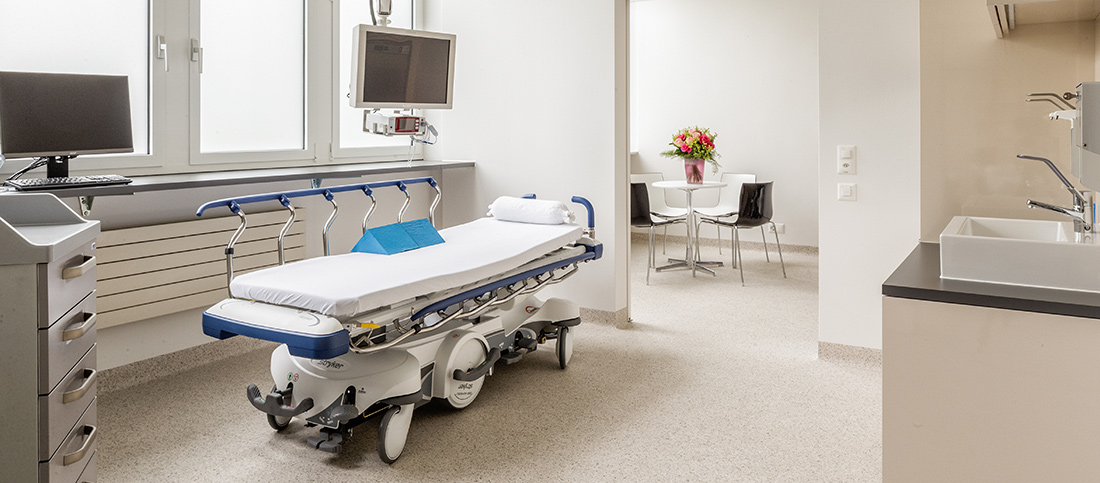Rectal Manometry
Rectal manometry is performed to measure muscular function, anorectal sensitivity, and the stiffness (compliance) of the rectum.
Rectal manometry is the most important test to diagnose faecal incontinence. It measures pressure and movements of the rectal (sealing function) and anal (clamping function) sphincter muscles. However, the test should also be conducted when a person experiences chronic constipation due to inadequate muscular relaxation of the sphincter. Instead of opening, during the intestine's squeezing contractions, the sphincter remains closed or may even tense up.
What Happens During a Rectal Manometry
You do not need to prepare for the examination.
For the examination, you will be asked to lie on your left side. You do not need any sedatives as a rectal manometry is not painful. The probe for the pressure measurement is about 5 mm in diameter and is inserted through the anus.
The measurement of the pressure of the internal (rectal) sphincter is performed passively. For the measurement of the pressure of the external (anal) sphincter, you will be asked to contract your sphincter briefly. After testing the function of the sphincters, a test will be performed to see how sensitive your rectum is. This is done by slowly inflating a small balloon in the rectum. Incontinence or constipation are often attributed to an excessive or diminished perception of rectal filling.
The entire examination takes about 2 hours.

